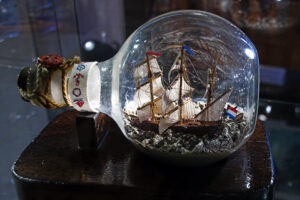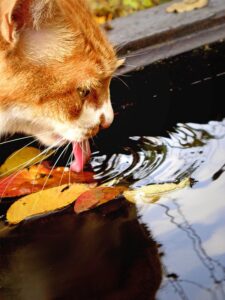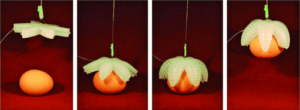I’ve had a long-running email conversation with Randy Olson, a biologist-turned-film-maker, about what works and what fails when you are trying to convey science to the world at large. In his documentary Flock of Dodos, Randy looked at how creationists made inroads in his home state of Kansas. Randy argued in the movie that evolutionary biologists needed to learn how to do a better job of talking about their work to the public, especially when there’s a well-funded publicity machine operating on the other side. Otherwise, they end up sounding obtuse and high-handed.
Olson makes a similar point in his book, Olson and I send each other new examples of this failure to communicate. In November, for example, I sent Randy a link to a new site called ClimateEngage.org. It consists of nothing more than a letter some climate scientists wrote to the journal Science about the need to communicate, with a list of endorsements. “We call for the science community to develop, implement, and sustain an independent initiative with a singular mandate: to actively and effectively share information about climate change risks and potential solutions with the public, particularly decision-makers in the public, private, and non-profit sectors,” they wrote.
As I wrote to Randy at the time, “That’s sure got zing.”
Randy replied, “Indeed, like a nudibranch sprinting across the top of a kelp frond.”

A year ago, Randy started writing a series of essays at The Benshi on this problem. I find them worthwhile and provocative, even if I don’t always agree with them. His most recent one especially resonated with me. He likens the way scientists talk about science to the way parents have subjected their friends and neighbors to home movies of their children. Of course they love their children. Of course their children are wonderful. (Well, most of them.) Nevertheless, their movies can be exquisite torture. For the parents, every scrap of film is equally precious. And if someone kindly suggests trying to shape their footage into a narrative, the parents are outraged. It sounds as if you hate their children.
From my own experiences teaching science graduate students about writing–and suffering through ultradense powerpoint presentations–I’ve come up with a similar image: a ship in a bottle. If scientists have only 15 minutes to present a year’s worth of research, or if some sadistic journalist challenges them to explain a paper in 500 words, many of them feel compelled to talk about every facet of the work. Just as a ship in a bottle has tiny portholes and capstans, articles and talks by scientists often include miniaturized representations of every twist, turn, and digression in a particular topic.

Unfortunately, language and stories don’t scale down like wood and sail cloth. In my most recent workshop for grad students at Yale, I asked them to write about a charming paper last year by Roman Stocker of MIT and his colleagues on how cats drink. The most common error was the urge to include every jot and tittle in the article, despite the fact that the paper and supplementary material run over 3700 words, and the article could only be 500. There is simply no way you can just shrink that down to less than a seventh its original size.
Nevertheless, some students felt compelled to take the final paragraph of the paper:
The subtle use of the tongue in the drinking process of F. catus is remarkable, given the tongue’s lack of skeletal support (28). Complex movement in the absence of rigid components is a common feature of muscular hydrostats, which in addition to tongues include elephant trunks and octopus arms (28, 29). The functional diversity and high compliance of these structures continue to inspire the design of soft robots (29), and a fundamental understanding of their functionality can lead to new design concepts and is essential to inform biomechanical models (29, 30).
…and turn it into passages like,
Stocker would not have been able to convince his colleagues to study how cats lap if there were not larger implications for this type of research. He viewed the problem as a question of biomechanics from the start. As it turns out, understanding how the tongue works to transport water can serve as inspiration in designing soft robots that can handle liquids.
As I pointed out in class, this sentence–the closing sentence in this particular story–leaves the reader in limbo. And it’s a lost opportunity. Soft robots–even in hypothetical ones–are exquisitely cool. But just referring elliptically to “soft robots” is meaningless. In order for soft robots to achieve coolness in the minds of readers, a writer has to actually explain what they are, and how cat tongue biomechanics can help guide their development. Doing so takes time–or, more precisely, words. And that means that a writer has to make some choices. The writer must ask, “What part of the study am I going to leave out. What is the story I am going to tell?”
This seems to be a very hard lesson for scientists to learn. But it’s a crucial one. Leave the ships in a bottle on the mantelpiece. Put your home movies into Final Cut Pro and learn how to cut and splice. Think about what it takes to tell a story.
[Images– Dad at the projector: The Benshi, Ship: Photo by Roni G/Flickr, Cat: Photo by tanakawho/Flickr, Soft robot: Wiley]
[Update: Apologies for the typos, now fixed.]
Originally published February 25, 2011. Copyright 2011 Carl Zimmer.
